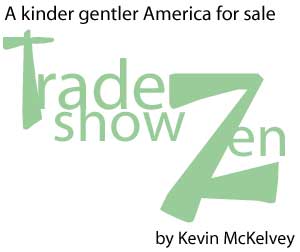
The exhibition business has gone soft, according to some of Atlanta's leading event marketing and design firms. When the economy began to tumble in mid 2000, it knocked the glitz right out of the booming event marketing business. For the first time ever, event marketing budgets across the board were either frozen, put on hold, or cut. Corporations reduced the number of events in which they exhibited, held back on new booths, and cut the number of employees attending major trade shows. When the economy went from boom to ho-hum, the landscape of the marketing world, like everything, changed.
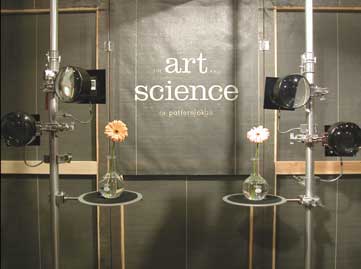 The towers of babbling color monitors and thumping sound systems came down. In their place, rose smart, elegant spaces of light, inviting materials designed to give visitors a sense of comfort, and to envelope them in a total brand experience.
The towers of babbling color monitors and thumping sound systems came down. In their place, rose smart, elegant spaces of light, inviting materials designed to give visitors a sense of comfort, and to envelope them in a total brand experience.
"Prior to 9/11, our research gave us an entirely different color palette and whole different set of materials that architects and designers would want to use," Mike Melia recalls. Melia's company, Melia Design Group, handles event marketing for companies like KI Furniture, one of the country’s largest furniture manufacturers. Since the economy shifted in 2001, he’s seen different clients with different preferences and different objectives. "Clients became more conservative. They wanted more secure, earthy colors. More wood. More comfort. It’s a totally different environment."
Bill Grant, President and Creative Director of Grant Design Collaborative, agrees. "Materials are softer, lighter and more stylish. Exhibit spaces are less built out than they were in the past. With technology, there's not a huge need for large murals and fixed visuals. You can create a space and transform it depending on the crowd attending. People are using technology to capture leads. It's the business card scanner rather than the old fish bowl approach."
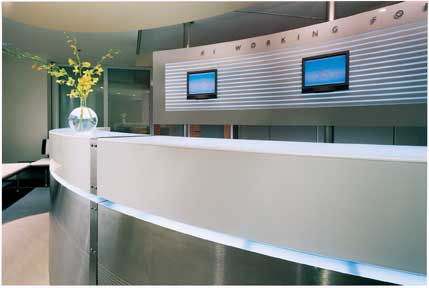
In response to the slowing economy, companies are looking for ways to save on their event marketing budgets. Those strategic decisions are driving today’s trends in exhibit design. By some estimates, more than 2,000 trade shows and related events were cancelled as a direct result of 9/11. Those that survived saw a marked change in how companies do business in the new economic and political environment.
"In the 1990s, there was this competition to see who could stack the largest number of monitors on top of each other and who had the loudest sound system," recalls Melia, who worked extensively with VH1 and MTV throughout the 90s. "That's all gone away now. People have become numb to it. Not just in a budgetary sense, but stylistically as well."
In order to reduce drayage, the shipping costs associated with transporting exhibits from one show to the next, companies have put pressure on their design and build-out teams to come up with new, lighter booth designs that are cheaper to build, easier to ship, and require less people to assemble.
Huge architectural structures of steel and flying wedges have given way to welcoming spaces defined by walls of frosted glass, fabric curtains, and scrims, alive with projected images. "It's part theater and part lifestyle," Bill Grant explains. "Designers are creating cool, hip spaces that people want to linger in. Trade shows are not very humane. They’re huge, noisy, and cluttered. So when you come upon a clean space that plays really great music and it’s full of beautiful people, you gravitate toward that space. I call it the ‘Ian Schrager influence."
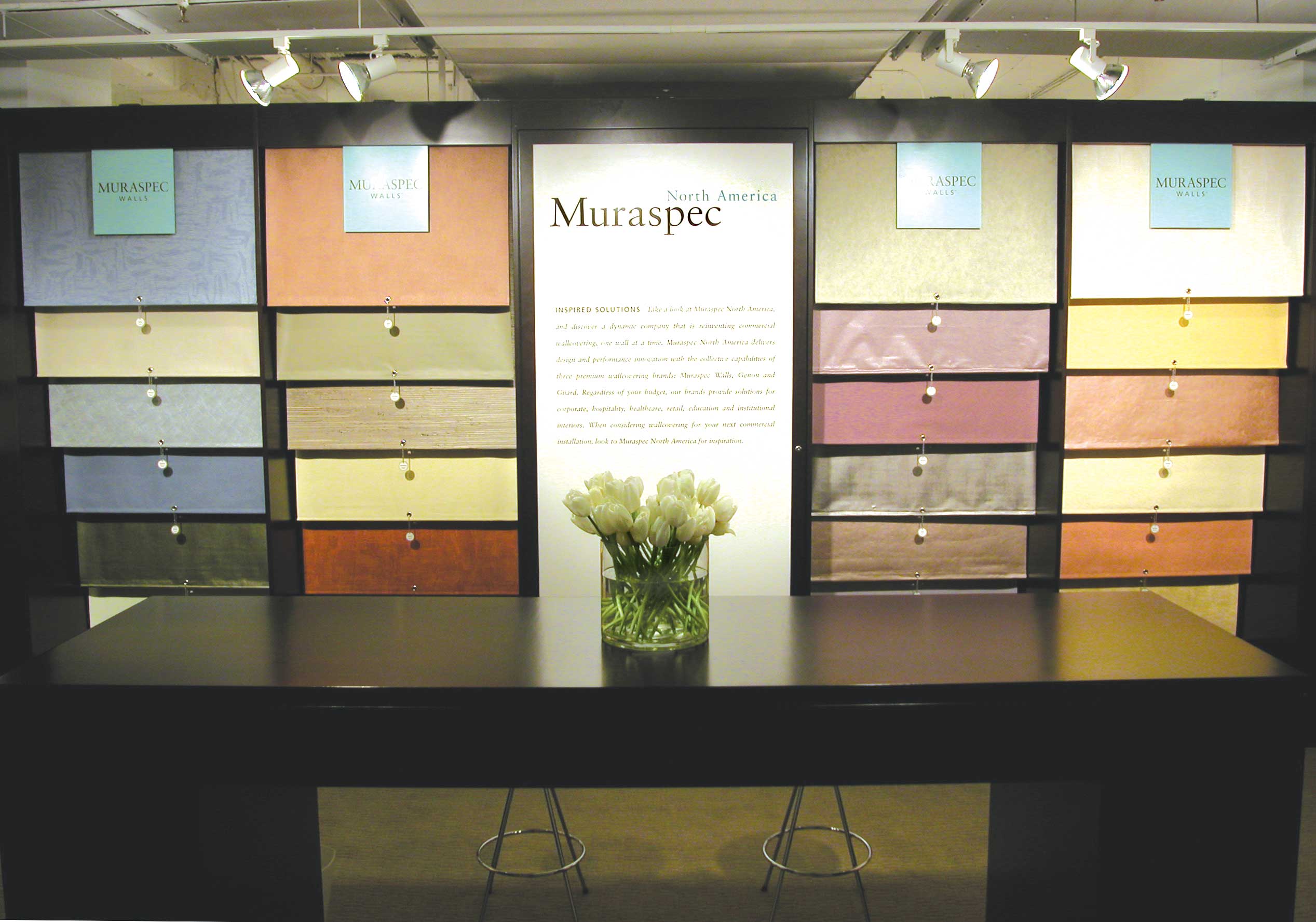
Schrager is credited with redefining the modern hotel by creating a collection of sleekly designed boutique hotel spaces that have become chic destinations, rather than merely places to pass through. His holdings include the Hudson Hotel in New York, the Mondrian in Los Angeles, and St. Marten’s Lane in London.
Difficult economic times have also forced a change in the size and complexity of current exhibit design. Lance Wachholz, President and Director of Sales for Laarhoven Design, has seen the rental side of his business double in the past three years. Many companies that used to spend small fortunes on designing and maintaining their own exhibits have scaled back, turning to customized rentals instead.
"People want things more modular and portable," Wachholz says. "There's maintenance costs involved in getting a booth show ready, plus the expense of the graphics message you want to apply. Then you have drayage. The heavier a booth is, the longer it takes to set up, the more it costs to ship, and the more service fees associated with the show overall. Often, we can offer a customized rental design for about the same money it would take for a company to revamp and ship their old booth. And you don’t have the expense of owning it."
To stretch their event marketing dollars even further, companies have shunned the idea of the "big splash approach" to trade show exhibition. Instead, they’re creating environments that reinforce their brand, paying attention to the smallest details to ensure that customers relate the company’s booth with a positive experience.
"Product always has to be front and center," Bill Grant says. "But a lot more attention is being paid to the context in which that product is being presented. We're trying to create spaces that not only show the product, but give you a sense of what the company is about. That's part of the branding world we live in."
In 2001, major corporations participated in an average 16 tradeshows per year. This year, they might make 14. The number of attendees at individual events has also fallen. But the big trade show is still the only place where everyone can come together to see the latest and greatest their industry has to offer.
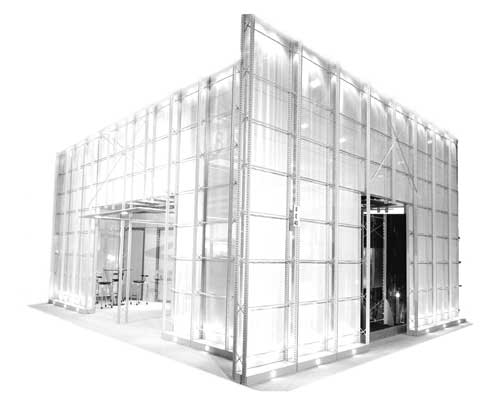
"I think the industry has hit a bottom," Hughes says. "Information Technology may take a little bit longer. But we are seeing a steady thawing in event marketing budgets."
"September 11 affected people’s desire to travel to shows quite a bit," Wachholz points out. "But the quality of those attendees has improved dramatically. The serious people are still going. They're not just shopping anymore. They're buying."
Event marketers are still combing their budgets looking for ways to trim the last bits of remaining fat. But the good news is those budget cuts seem to be slowing, according to Michael Hughes, Director of Research for "Tradeshow Week" Magazine.
During 1990s, the event marketing industry grew at a rate in the high single digits, significantly faster than GDP, Hughes believes that going forward, industry revenues will grow at a pace more closely matched to the economy as a whole. This year, the gross domestic product is expected to grow about 3%.
What does that mean for the exhibit industry's creative direction? That's still to be determined. But the sea change that has occurred since the economic seas have quieted will probably remain in place for some time to come. "Trade show exhibits are not meant to be looked at in awe anymore," Mike Melia says. "They're not just exhibit architecture with giant signs hoisted in the air. They're metaphors for the company and meant to be experienced on a more intimate scale."
Pictures as follows: 1st - Pattern Lok exhibit by Grant Design Collaborative, 2nd - Neocon front desk by Melia Design Group, 3rd - Muraspec flooring exhibit by Grant Design Collaborative, 4th - Modular booth by Laarhoven Design